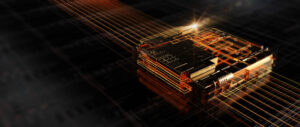Predicting crystal orientation
Researchers from Nagoya University and RIKEN trained an AI on optical photographs of polycrystalline silicon and used it to predict crystal orientation during manufacturing. They found that the AI successfully predicted the grain orientation distribution.
“The time required for this measurement was about 1.5 hours for taking optical photographs, training the machine learning model, and predicting the orientation, which is much faster than conventional techniques, which take about 14 hours,” said Noritaka Usami, a professor in the Graduate School of Engineering at Nagoya University. “It also enables measurement of large-area materials that were impossible with conventional methods.”
“This is a technology that will revolutionize materials development,” Usami said. “This research is intended for all researchers and engineers who develop polycrystalline materials. It would be possible to manufacture an orientation analysis system of polycrystalline materials that packages an image data collection and a crystal orientation prediction model based on machine learning. We expect that many companies dealing with polycrystalline materials would install such equipment.”
Counting with rubber
Researchers from Leiden University and AMOLF Amsterdam created a block of rubber that can count to ten and remember the order in which it is pressed.
The mechanical metamaterial is a piece of soft rubber with 22 beams in pairs. When initially pushed, the bars bend to the left, except for the first, which bends to the right. “That first bar then pushes the next pair to the right and that moves along one position each time you push the material. That’s how the material counts to ten,” said Lennard Kwakernaak, a PhD candidate at Leiden University.

The rubber metamaterial. (Credit: Charlotte Ellerman / Leiden University)
The bar and its position can be compared to a bit, the researchers noted. “It’s not easy to design the structure so that it responds the way we want. Counting is the simplest computation we could come up with, so that was a logical starting point,” continued Kwakernaak. “Along the way, I found out that you can cause different reactions in the rubber by pushing with different levels of force. By experimenting with this, I was able to make a metamaterial that only counts to the end if you push on it in the right order, with the right amount of force. A kind of lock, in other words.”
Two potential applications the researchers see is counting cars from different weight classes driving over a bridge, or pedometers. “The big advantage is that such mechanical metamaterials are cheap, robust and low-maintenance,” Kwakernaak said. “That makes them interesting for all kinds of applications.”
Next, they plan to design a more complicated structure, where there is interaction between neighbours not just in one direction, but in a plane. Kwakernaak noted, “That would actually be a simple computer.”

Jesse Allen
(all posts)
Jesse Allen is the Knowledge Center administrator and a senior editor at Semiconductor Engineering.
- SEO Powered Content & PR Distribution. Get Amplified Today.
- PlatoData.Network Vertical Generative Ai. Empower Yourself. Access Here.
- PlatoAiStream. Web3 Intelligence. Knowledge Amplified. Access Here.
- PlatoESG. Automotive / EVs, Carbon, CleanTech, Energy, Environment, Solar, Waste Management. Access Here.
- BlockOffsets. Modernizing Environmental Offset Ownership. Access Here.
- Source: https://semiengineering.com/research-bits-july-12/
- :is
- :not
- :where
- $UP
- 1
- 12
- 14
- 22
- 28
- 80
- a
- Able
- About
- AC
- actually
- ADvantage
- AI
- All
- All Posts
- along
- also
- amount
- amsterdam
- an
- analysis
- and
- applications
- ARE
- At
- bar
- bars
- based
- BE
- between
- Big
- Bit
- BRIDGE
- but
- by
- CAN
- candidate
- cars
- Cause
- Center
- Charlotte
- cheap
- classes
- collection
- come
- Companies
- compared
- complicated
- computation
- computer
- continued
- conventional
- could
- counting
- created
- credit
- Crystal
- data
- dealing
- Design
- develop
- Development
- different
- direction
- distribution
- driving
- during
- each
- easy
- editor
- enables
- end
- Engineering
- Engineers
- equipment
- Except
- expect
- faster
- First
- For
- Force
- found
- from
- graduate
- HOURS
- How
- HTML
- HTTPS
- i
- if
- image
- impossible
- in
- In other
- initially
- install
- intended
- interaction
- interesting
- IT
- ITS
- jpg
- July
- just
- Kind
- knowledge
- learning
- left
- levels
- logical
- machine
- machine learning
- make
- MAKES
- manufacturing
- many
- material
- materials
- max-width
- measurement
- mechanical
- metamaterials
- methods
- model
- more
- moves
- much
- next
- noted
- of
- on
- ONE
- only
- or
- order
- Other
- out
- over
- packages
- pair
- pairs
- photo
- photographs
- piece
- plan
- plato
- Plato Data Intelligence
- PlatoData
- Point
- position
- possible
- Posts
- potential
- predicted
- predicting
- prediction
- Professor
- Push
- pushed
- pushes
- Pushing
- reactions
- remember
- required
- research
- researchers
- revolutionize
- right
- RIKEN
- robust
- rubber
- Said
- School
- School of Engineering
- see
- semiconductor
- senior
- Silicon
- Simple
- So
- Soft
- Starting
- structure
- Successfully
- such
- system
- Take
- taking
- techniques
- Technology
- ten
- than
- that
- The
- Them
- then
- There.
- they
- this
- thumbnail
- time
- to
- trained
- Training
- university
- used
- want
- was
- Way..
- we
- weight
- were
- when
- which
- WHO
- will
- with
- words
- would
- you
- zephyrnet












